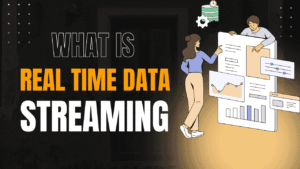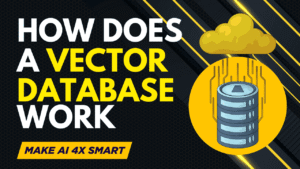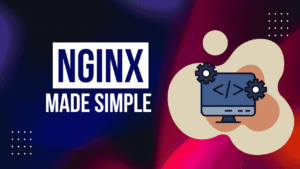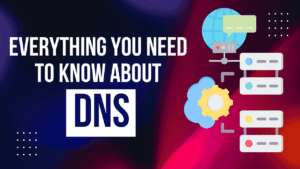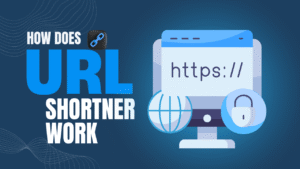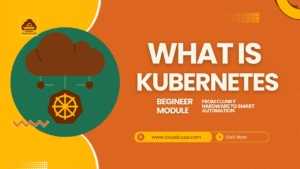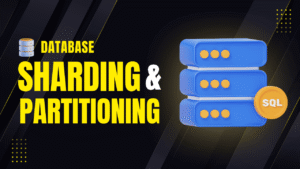Imagine you’re chatting with a smart assistant on your phone, asking it to book a flight to Paris for next weekend. Behind the scenes, that assistant—powered by a large language model (LLM) like those from OpenAI or Anthropic—isn’t just pulling answers from thin air. It needs to reach out to airlines, check hotel availability, or even peek at your calendar. But here’s the catch: these AIs are wizards with words, not direct lines to the real world. They can’t just “know” the latest flight prices or your email attachments without some help. This is where connection protocols come in, acting like bridges between the AI’s brain and the outside universe of data and services.
In the world of AI agents—those autonomous helpers that don’t just answer questions but take actions like booking trips or analyzing reports—two standout options are rising to the challenge: MCP (Model Context Protocol) and gRPC (Google Remote Procedure Call). MCP, fresh out of the gate from Anthropic in late 2024, is like a custom-tailored suit for AI, designed from the ground up to let LLMs chat naturally with tools and databases. On the other hand, gRPC is the battle-tested workhorse, a protocol that’s been gluing together software services for years with lightning speed, but it wasn’t built with chatty AIs in mind.
Why compare these two? As AI agents shift from simple chatbots to full-fledged digital butlers handling complex tasks, choosing the right way to connect them to tools and data can make or break their usefulness.
On This Page
Table of Contents
The Big Challenge: Why AI Agents Can’t Go It Alone
Picture an LLM as a brilliant but forgetful librarian. It has shelves of books (its training data) packed with general knowledge, but its desk— the context window—can only hold so many pages at once. Modern LLMs boast massive context windows, like 200,000 tokens (roughly the length of a short novel), but that’s still peanuts compared to the ocean of real-world info out there. You wouldn’t cram an entire library into one backpack, right? Same deal here: stuffing a full customer database, live stock prices, or your company’s code repository into an LLM’s context would be inefficient and error-prone.
This limitation hits hard for AI agents, which are LLMs evolved to act, not just talk. Need to reschedule a meeting? The agent must query your calendar app. Want personalized shopping recommendations? It pulls from e-commerce inventories. Without reliable ways to fetch this on the fly, agents are stuck guessing or hallucinating—spouting confident but wrong answers, like suggesting a flight that’s already sold out.
The solution? Turn the agent into a savvy conductor, orchestrating queries to external systems as needed. Instead of loading everything upfront, it asks: “What’s the weather in Paris?” and weaves the response into its thinking. This on-demand querying keeps things lightweight, fresh, and scalable. But how does the agent “speak” to these systems? That’s where protocols like MCP and gRPC enter, providing the grammar and vocabulary for seamless handshakes.
Consider a everyday example: You’re building a travel AI agent. Without connections, it might say, “Book a flight? Sure, try Delta—prices around $500.” (Pulled from old training data.) With smart linking, it pings live APIs: “One-way to Paris: $420 on Air France, leaving tomorrow.” Suddenly, your agent isn’t just helpful—it’s indispensable.
- Key Hurdles for AI Connections:
- Probabilistic Nature: Unlike rigid software that always calls the same function, AIs think in probabilities. They need hints on when and why to use a tool, not just how.
- Real-Time Demands: Data changes fast—stock ticks, weather updates—so connections must handle streams without choking.
- Scalability: As agents juggle multiple tasks (e.g., booking flight and hotel), protocols must support parallel calls without drama.
- Ease for Humans: Developers want simple setups, not endless custom code.
These pain points aren’t abstract. In a 2025 survey by Gartner, 68% of AI projects stalled due to integration woes with external data. Enter our protagonists: MCP for intuitive, AI-friendly links, and gRPC for raw power.
Introducing MCP: The AI-Native Bridge Builder
If gRPC is a high-speed freeway, MCP is a smart GPS that talks back in full sentences. Launched by Anthropic in November 2024 as an open standard, MCP is purpose-built for AI agents to link LLMs with the messy, dynamic world of tools and data. Think of it as a universal adapter plug for AI: no more fumbling with proprietary cables for each device.
At its core, MCP revolves around three elegant building blocks, or primitives, that make interactions feel natural:
- Tools: These are like reusable gadgets—functions the AI can call, such as “get_weather” or “book_flight.” Each comes wrapped in plain-English descriptions, so the LLM understands not just the inputs/outputs but the intent. Example: A tool for inventory checks might say, “Use this when customers ask about stock levels in our warehouse—returns JSON with item IDs and quantities.”
- Resources: Static or semi-static info that sets the stage, like database layouts or user profiles. It’s the “cheat sheet” an AI consults before diving in, ensuring queries are spot-on without trial-and-error.
- Prompts: Pre-crafted templates for conversations, guiding how the AI interacts. For instance, a prompt might outline: “When querying sales data, start with: ‘Summarize trends for [product] in [region].'”
What sets MCP apart? Runtime discovery. When an AI agent connects to an MCP server, it doesn’t need a pre-written manual. It simply asks, “What can you do?” via commands like tools/list, and gets back a friendly menu of options. No retraining the LLM—just plug and play. This adaptability shines in evolving setups, like a retail agent suddenly needing to tap into a new supplier’s API.
Let’s unpack with a simple scenario: Building a customer support bot for an online store. The bot, powered by an LLM like Claude, hears: “Is my order #123 shipped?”
- The agent queries the MCP server connected to the warehouse database.
- Using
tools/list, it spots “track_order” with description: “Fetches real-time status for orders—ideal for shipping queries.” - It calls the tool, slipping in order #123.
- Back comes: “Shipped via UPS, ETA 2 days.” The agent weaves this into a warm reply: “Great news—your sneakers are en route!”
No clunky if-then code; the LLM decides based on semantic clues. For developers, setup is straightforward using JSON-RPC 2.0 over WebSockets or HTTP—text-based, so you can peek inside messages like reading a letter.
To illustrate a basic MCP interaction (no heavy coding, just a peek under the hood), here’s a simplified JSON request for listing tools:
{
"jsonrpc": "2.0",
"method": "tools/list",
"params": {},
"id": 1
}Response? Something readable like:
{
"jsonrpc": "2.0",
"result": [
{
"name": "track_order",
"description": "Check shipping status for customer orders.",
"parameters": {"order_id": "string"}
}
],
"id": 1
}Easy to debug, LLM-friendly, and scalable for agents handling dozens of such calls.
MCP isn’t perfect—it’s newer, so ecosystem tools are growing—but its AI-centric design makes it a go-to for prototypes and adaptive systems. In education apps, for example, an agent could discover math solvers on the fly, tailoring lessons without devs rewriting prompts.
gRPC: The Reliable Speedster from the Microservices Era
Now, shift gears to gRPC, the protocol that’s been quietly powering giants like Netflix and Google since 2015. Short for Google Remote Procedure Call, it’s an RPC framework that lets software components call each other like local functions, but over networks. It’s not AI-specific—born for microservices architectures where apps break into tiny, chatty pieces—but its efficiency makes it a contender for AI agents craving speed.
gRPC‘s secret sauce? Protocol Buffers (Protobuf) for data packing. Instead of wordy text, it serializes info into compact binary blobs—think compressing a novel into a ZIP file. This slashes bandwidth and parse times. Layer on HTTP/2 for transport, and you get multiplexing (multiple calls sharing one pipe) and bidirectional streaming (real-time back-and-forth, like a video call vs. emails).
For LLMs and agents? gRPC excels in high-volume scenarios, like a trading bot querying market data every millisecond. But it assumes the caller knows the playbook—method names, params—upfront. No built-in “why” explanations, so AIs often need a middleman: an adapter layer to translate fuzzy intents (“What’s the stock price?”) into precise calls (“invoke GetQuote(symbol=’AAPL’)”).
Take our travel agent again. With gRPC, the flow might look like:
- Agent thinks: “User wants flight info.”
- Adapter translates to gRPC call:
FlightService.GetAvailability{from: 'NYC', to: 'PAR', date: '2025-10-20'}. - Service responds in binary: Packed details on seats and fares.
- Adapter feeds it back to the LLM for a natural summary.
A snippet for this (kept light—no full code marathon):
syntax = "proto3";
service FlightService {
rpc GetAvailability (FlightRequest) returns (FlightResponse);
}
message FlightRequest {
string from = 1;
string to = 2;
string date = 3;
}Compile to code in your language of choice (Python, Java), and you’re calling remote methods like locals. Blazing fast—same request in gRPC might clock 20 bytes vs. 60+ in text formats.
gRPC‘s strengths shine in production: Proven at petabyte scales, with built-in auth, load balancing, and error handling. For AI, it’s powering inference servers where LLMs serve thousands of queries. Drawback? That adapter tax—extra code to bridge AI’s vagueness to gRPC‘s precision.
Architectures Side by Side: How the Pieces Fit
Both protocols build bridges, but their blueprints differ like a cozy neighborhood path (MCP) vs. an interstate highway (gRPC). Let’s map them out.
In MCP‘s setup:
- Host Application: The LLM or agent app overseeing everything.
- MCP Client: One per connection, handling JSON-RPC chats.
- MCP Server: The gateway wrapping real tools (DBs, APIs, files).
- Flow: Host → Client → Server → External Service → Reverse.
It’s modular—multiple clients for parallel tasks—and keeps things LLM-legible.
gRPC flips to a leaner, direct vibe:
- AI Agent: The LLM brain.
- Adapter Layer: The translator (custom or off-the-shelf).
- gRPC Client: Generated stubs for calls.
- gRPC Service: The endpoint exposing methods.
- Flow: Agent → Adapter → Client → Service.
No host overhead, but that adapter adds complexity.
| Aspect | MCP Architecture | gRPC Architecture |
|---|---|---|
| Core Components | Host, Client(s), Server | Agent, Adapter, Client, Service |
| Transport | JSON-RPC 2.0 (text-based) | HTTP/2 with Protobuf (binary) |
| Connection Style | Stateful, discovery-first | Stateless calls, reflection optional |
| Best For | Adaptive AI discovery | High-throughput, predefined ops |
| Overhead | Low setup, higher message size | Minimal runtime, dev-time code gen |
This table highlights why MCP feels “plug-and-learn” while gRPC is “build-and-blitz.”
Discovery: Uncovering Tools Without a Map
One of the juiciest differences? How agents find what they need. It’s like job hunting: MCP hands you a resume with career advice; gRPC lists skills but skips the “fit” chat.
- MCP Discovery:
- Built-in via
tools/list,resources/list,prompts/list. - Returns semantic gold: Descriptions like “Call for urgent alerts—triggers notifications.”
- Dynamic: Agents adapt mid-convo, e.g., spotting a new “email_sender” tool for follow-ups.
- LLM-Optimized: Natural language lets the model reason: “Weather query? Yep, that tool.”
- gRPC Discovery:
- Server Reflection: Queries services/methods, yields Protobuf schemas (e.g., “GetWeather(lat: float, lon: float) → Temp”).
- Structural, not storytelling—no “Use for forecasts, not history.”
- Adapter Dependency: Must map intents to signatures, risking mismatches.
- Edge: Fast introspection for code-gen tools.
In practice, MCP empowers exploratory agents, like a research bot scanning libraries on the fly. gRPC suits scripted ones, where speed trumps serendipity.
Pros, Cons, and Picking Your Protocol
Neither reigns supreme; it depends.
| Protocol | Pros | Cons |
|---|---|---|
| MCP | AI-native discovery; Easy semantics; Open & adaptable | Verbose payloads; Newer ecosystem |
| gRPC | Blistering speed; Mature tooling; Streaming prowess | Needs adapters; Less intuitive for LLMs |
Choose MCP for nimble prototypes; gRPC for scaled ops. Often, layer them: MCP as AI front-end, gRPC backend engine.
WrapUP: A Duo for AI’s Golden Age
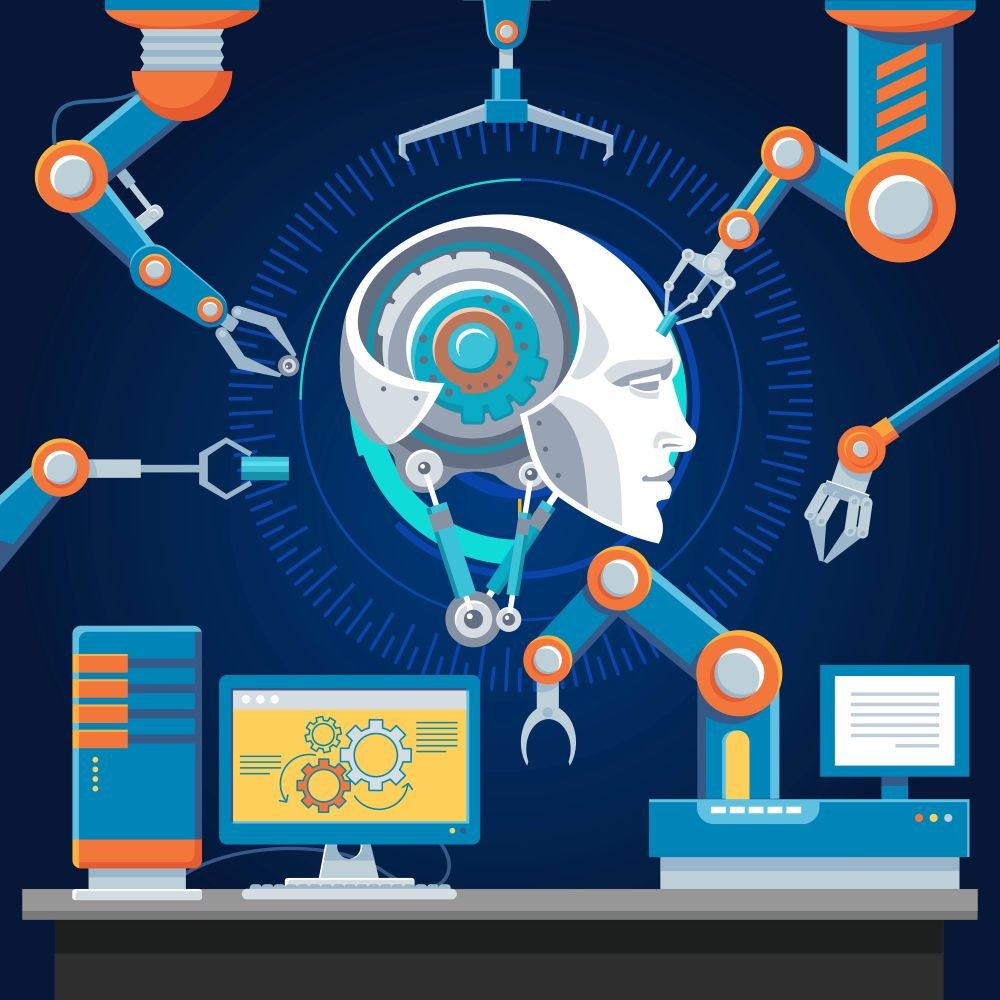
As AI agents mature—from novelties to necessities—MCP and gRPC will tag-team. Expect MCP standardizing AI-tool chats, gRPC fueling the grunt work. Hybrids could birth “smart highways”: Discover with words, execute with bits.
In wrapping up, remember: The best connection isn’t fastest or fanciest—it’s the one that lets your AI think and act like a pro.
FAQs
What are MCP and gRPC, and why do AI agents need them?
Imagine an AI agent as a super-smart assistant who’s great at chatting but doesn’t have direct access to your calendar, a store’s inventory, or live weather data. To do tasks like booking a trip or checking stock levels, the AI needs a way to “call” other systems. That’s where MCP and gRPC come in—they’re like phone lines for AI.
MCP: A newer system (launched by Anthropic in 2024) built just for AI. It lets the AI figure out what tools are available and how to use them, like a friendly guide explaining options in plain English.
gRPC: An older, super-fast system from Google, used for years to connect apps. It’s great for speed but needs extra work to help AI understand what’s going on.
AI agents need these to grab real-time info without trying to memorize the entire internet, which is impossible even for the biggest LLMs.
How does MCP make life easier for AI agents?
MCP is like a menu with notes for the AI. When the AI connects to a system using MCP, it can ask, “What can you do?” and get a list of tools (like “check weather” or “send email”) with simple descriptions. For example, a tool might say, “Use me to get today’s forecast for any city.” The AI reads this, picks the right tool, and gets the job done—no retraining needed.
What makes gRPC different from MCP?
gRPC is like a super-fast courier who delivers packages but doesn’t explain what’s inside. It’s built for speed, using compact binary messages (not text) to zip data between systems. For example, if an AI needs stock prices every second, gRPC delivers them lightning-fast. But it’s not AI-friendly out of the box—someone needs to tell the AI what each “package” does, which often means adding a translator (called an adapter layer).
When would I use MCP instead of gRPC?
Pick MCP when you want your AI to be flexible and figure things out on its own. For instance:
You’re building a chatbot that answers random customer questions (e.g., “What’s my order status?” or “What’s the weather?”). MCP lets the AI discover tools like “track_order” or “get_weather” without you hardcoding every option.
When is gRPC the better choice?
Go for gRPC when speed and scale are critical. It’s perfect for:
High-speed tasks, like a trading bot pulling thousands of stock updates per minute.
Systems where you already know exactly what the AI needs to call (e.g., a specific “get_flight_prices” function).
Can MCP and gRPC work together?
Absolutely! Think of them as teammates. MCP can be the front desk, helping the AI discover what tools exist and when to use them. gRPC can be the engine room, handling the heavy lifting of fetching data quickly. For example, a logistics AI might use MCP to find a “route_optimizer” tool, then use gRPC to fire off rapid location pings to keep trucks on track.
Is MCP easy for developers to use?
Yes, MCP is designed to be developer-friendly, especially for AI projects. It uses JSON-RPC 2.0, which sends text messages that are easy to read and debug. For example, an AI can send a simple request like, “Show me your tools,” and get a clear list back. You don’t need to be a coding wizard to set it up, and since it’s built for AI, it cuts down on custom tweaks.
Does gRPC need a lot of setup for AI?
gRPC takes more effort for AI projects because it wasn’t made for them. You’ll need to:
Define services using Protocol Buffers (a way to structure data).
Write an adapter layer to translate the AI’s requests (like “What’s the weather like?”) into specific gRPC calls (like “GetWeather(city=’Paris’)”).
Generate client code for your programming language.
How do MCP and gRPC handle speed?
gRPC is the speed champ. It uses binary messages (super compact) and HTTP/2, which lets it handle multiple requests at once or stream live data, like sports scores. A single gRPC call might use 20 bytes and take 10 milliseconds, while an MCP call might use 60 bytes and 50 milliseconds because it’s text-based and chatty.
What’s the future for MCP and gRPC in AI?
Both have bright futures, but they’ll likely team up. MCP is perfect for helping AI agents explore and adapt to new tools, especially as more companies build flexible AI systems. gRPC will keep powering the backend, where speed and reliability matter most. In the future, you might see AI apps using MCP to “meet” new tools and gRPC to handle the heavy data crunching, creating a perfect balance of smarts and speed.

